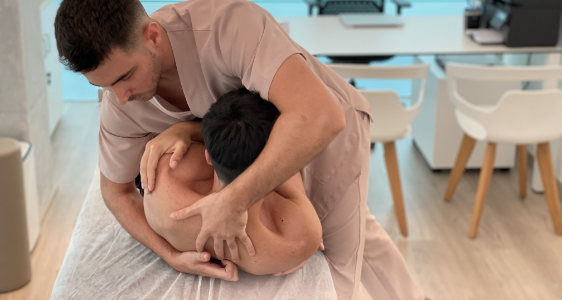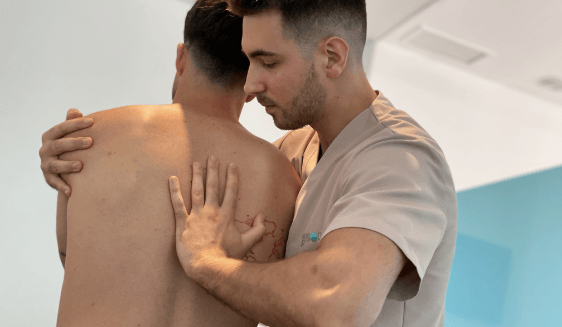
Osteopathy focuses on identifying hypomobility in the body.
With an extensive knowledge of human anatomy, physiology, and biomechanics as its starting point, osteopathy is the science that led to the development of a holistic method focused on treating the patient rather than the pathology. Its aim is not only to eradicate the symptoms, but also to identify and eliminate their source. Thus, osteopathy focuses on identifying hypomobility in the body, that is, joint dysfunctions or areas of the body that are not moving as they should due to a significant degree of limitation or joint blockage.
In short, these are manual techniques that go beyond curing a simple pain: the aim is for the patient to regain organic balance.
What are the origins of osteopathy?
The origins of osteopathy can be traced back to the United States of the late nineteenth century, to a doctor and surgeon named Andrew Taylor Still. His work led him to discover and demonstrate relationships between the musculoskeletal system and other organ systems, and, during the period 1870 – 1874, Still began the first clinical osteopathic work. In June of 1874, osteopathy was officially recognized as a medical discipline.

1. Structural osteopathy: which involves the application of techniques focused on anatomical structures such as muscles, joints, and ligaments using high velocity/low amplitude manipulations; functional or myofascial techniques; pumping techniques; joint techniques, etc.
2. Visceral osteopathy: which involves the application of techniques focused on the fascia and ligaments that support and hold the body’s organs together. Two good examples of visceral pathologies that can be treated with osteopathy are hiatal hernia and constipation.
3. Cranial osteopathy: which involves the application of techniques focused on the cranial sutures (joints in the skull) and intraosseous membranes. The aim is to restore mobility/plasticity to the skull and sacrum in order to restore the cranio-sacral respiratory rhythm. The skull and the sacrum are closely related via the dura mater (outermost meningeal layer), so tensions within this membrane can alter the cranio-sacral rhythm and cause problems in the rest of the body.

- Spinal pain: cervical, dorsal, lumbar
- Pains or symptoms involving the head or face: headaches and migraines, eye pain, dizziness, facial neuralgia, etc.
- Pain in the upper limbs: shoulder, elbow, forearm or hand, cervicobrachial neuralgia.
- Chest, abdominal, or pelvic pain
- Lower limb pains: hip, knee, ankle or foot: sciatica, cruralgia (thigh pain), tendonitis, sprains.


